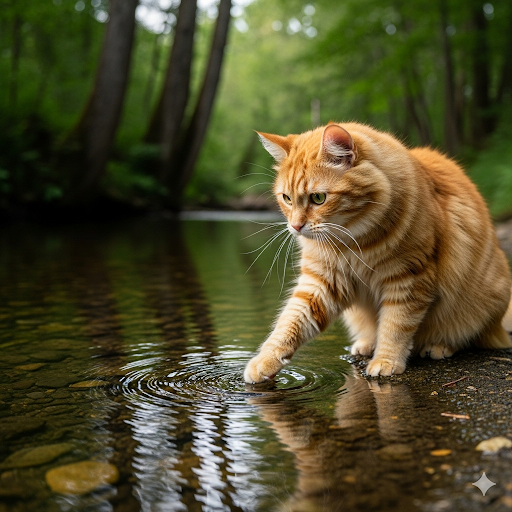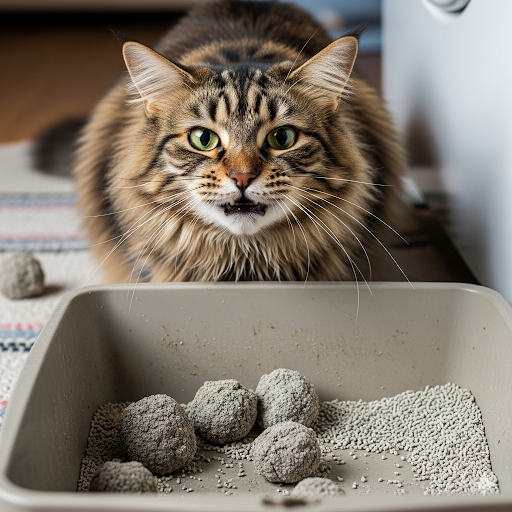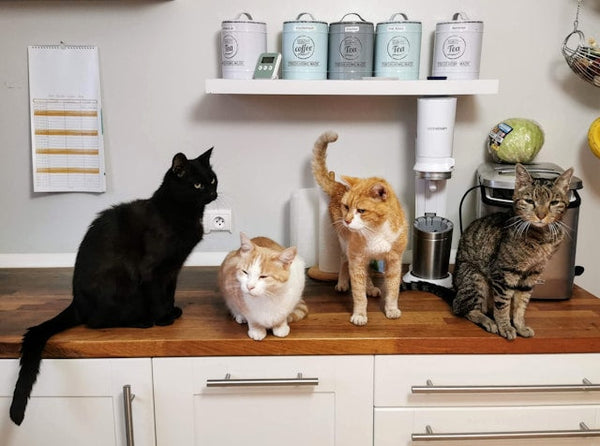
🐱 Introduction: The Mystery of the Post-Potty Scratch
Have you ever noticed your cat finishing their business, stepping in or out of the litter box… and then vigorously scratching the floor, wall, or even the air around it?
You clean the box, you keep it fresh — so why are they clawing at everything but the litter itself?
This curious feline behavior baffles many cat owners, but the answer lies deep in your cat’s instincts, environment, and even their opinion about your litter setup. Let’s dig in (pun intended!) and uncover the truth behind why cats scratch the floor around the litter box — and whether you should be concerned.
🧬 1. It’s All About Instinct: Covering Their Tracks (Literally)
In the wild, cats are both predators and prey. After relieving themselves, they instinctively try to cover the scent of their waste to stay hidden from potential threats — or to avoid offending a dominant cat in their territory.
When your cat scratches the floor or wall near the litter box, they’re performing the covering motion, even if they’re not actually moving litter. To them, the nearby surface still counts as part of the “burying area.”
👉 In short: your cat’s not being weird — they’re just practicing ancient feline hygiene habits.
🐾 2. They’re Trying to “Clean Up” Their Territory
Some cats scratch outside the litter box because they’re mimicking cleaning behavior — trying to tidy the area or remove invisible “evidence.”
This can happen if:
-
The box has lingering odors (even ones you can’t smell)
-
The floor or wall near the box absorbed urine scent
-
There’s a residue of litter dust or spilled granules
Your cat’s nose is far more sensitive than yours, and what smells neutral to you might scream “bathroom disaster!” to them.
🧼 Try this: clean under and around the litter box regularly with an enzyme-based cleaner or anti-odor cat litter with activated charcoal to remove invisible odor molecules. You may see the scratching reduce instantly.
🏠 3. It Could Be Territory Marking
Not all cats want to hide their scent — some want to announce their presence loud and clear.
Scratching releases scent markers from glands in their paws, so when your cat scratches near the litter box, they might be saying:
“This is my bathroom. My rules.”
This behavior is more common in multi-cat households or when new pets are introduced. It’s your cat’s polite way of setting boundaries — no verbal arguments needed.
🕵️ 4. Sometimes It’s Just “Cat Logic”
Cats often repeat actions that feel satisfying or instinctual. Scratching is self-rewarding behavior — it stretches their muscles, sharpens claws, and relieves tension.
After using the litter box, a quick scratch on the wall or floor might just feel good. Think of it as their version of washing hands, stretching, and celebrating a job well done — all at once!
🧴 5. Check the Cleanliness of the Litter Box
Even the tidiest cats won’t want to dig in a dirty box. If your cat finishes their business, sniffs around, and then scratches outside instead of inside, they could be avoiding an unpleasant mess.
Dirty litter, lingering odors, or old urine spots under the box can trigger this behavior.
🧹 Quick fix:
-
Scoop daily
-
Wash the box weekly (multiple cats) or monthly with mild soap
-
Replace litter completely every 2 weeks to 1 month
A clean box = fewer confusing scratching rituals.
🌈 6. They’re Seeking Sensory Feedback
For cats, scratching isn’t just about digging — it’s about texture and sensation.
After using the litter box, some cats seek out a different surface (like tile, wood, or wall paint) because it feels better on their paws. This can be a comforting sensory habit, especially if the litter texture doesn’t fully satisfy them.
💡 Observation tip:
If your cat always scratches the same spot (like a specific tile or patch of wall), it might be the texture they enjoy — not the location itself. Offering a nearby textured mat or scratching pad can redirect the behavior productively.
🌿 7. How to Redirect This Behavior (Without Stressing Your Cat)
If the scratching is excessive or damaging your floors, here’s how to gently redirect it:
✅ Place a litter mat or rubber mat under and around the box
✅ Offer a scratching post or pad near the litter area
✅ Experiment with different litter types and box sizes
✅ Use positive reinforcement — praise your cat when they use the box calmly
✅ Avoid punishment (which causes stress and worsens the behavior)
🔍 8. When to Worry: Health Red Flags
Occasional scratching is normal, but watch for:
-
Straining or crying in the box
-
Frequent visits with no results
-
Peeing or pooping outside the box
-
Sudden changes in bathroom habits
These could indicate pain, urinary issues, or constipation — all of which require a vet visit.
🐾 Conclusion: Scratching Isn’t a Problem — It’s Communication
When your cat scratches the floor or wall after using the litter box, they’re not misbehaving — they’re communicating.
It’s part instinct, part preference, and sometimes, a subtle critique of your bathroom management skills. 😺
By understanding the why behind the scratching, you can keep your cat happy, your home tidy, and your bond stronger than ever.
💬 Bonus Tip: Observe and Adapt
Every cat is unique. Spend a few days watching your cat’s litter box habits closely — you’ll start to recognize their personal routine and triggers.
The more you “listen” to your cat’s messages (even the messy ones), the more harmonious your home life becomes.



